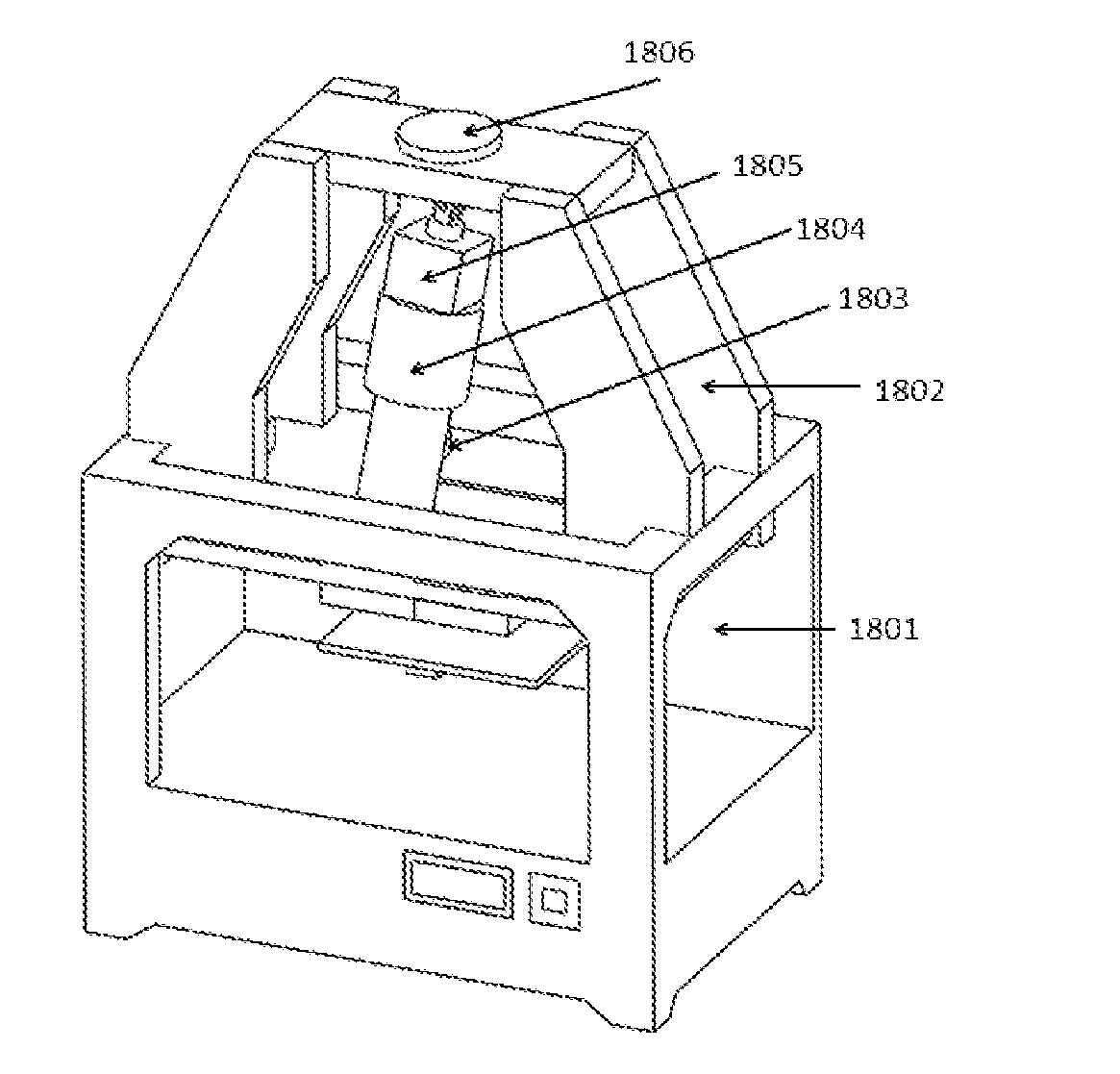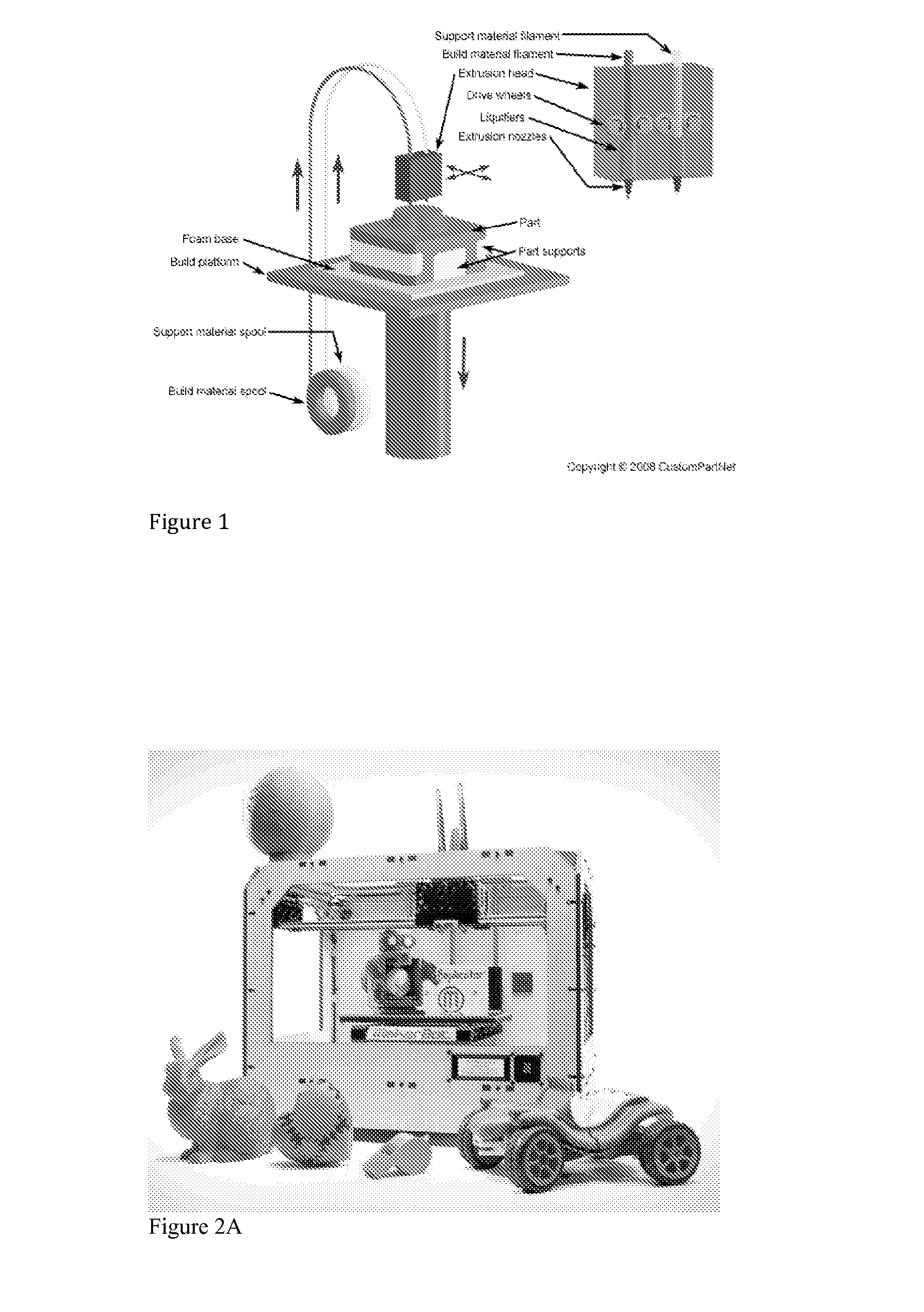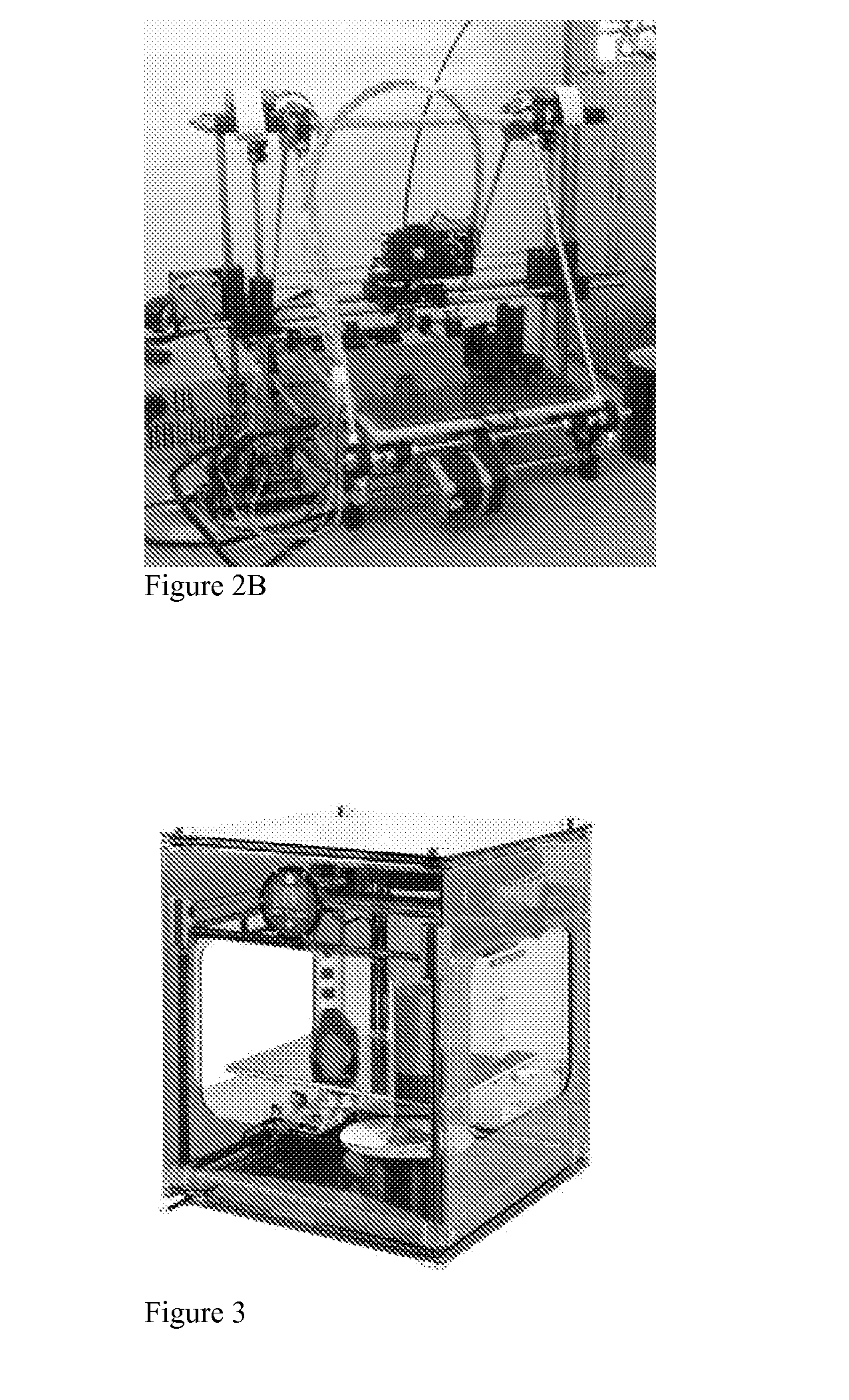Device and Method to Additively Fabricate Structures Containing Embedded Electronics or Sensors
a technology of embedded electronics or sensors, applied in the field of additive manufacturing methods and systems, can solve the problems of inability to manufacture custom or non-planar sensors inside the structure of the produced part, inability to manufacture traditional fabrication methods, and inability to manufacture traditional prototypes & manufacturing with traditional fabrication methods, etc., to achieve the effect of reducing the force required and high viscosity
- Summary
- Abstract
- Description
- Claims
- Application Information
AI Technical Summary
Benefits of technology
Problems solved by technology
Method used
Image
Examples
Embodiment Construction
[0053]The Embedded Electronics by Layered Assembly (EELA) system is a motorized extruder that can be used to extrude a piezoresistive elastomer, such as a conductive silicone compound, into channels built during the additive manufacturing process on a 3D printer. The EELA system enables the building of conductive circuitry directly into an object while the object is being printed, rather than requiring the injection of the conductive material after the 3D printing is completed. The EELA system is capable of more fine-tuned and precise movements than a person can make with a syringe, and since printing and extrusion occur together, the EELA system may easily reach all areas of the conductive path in the object since it has access to the cross section of each layer during the build. This eliminates the potential problems described above and requires less overall work during manufacturing. Additionally, this can help to standardize the process of embedding conductive materials.
[0054]FI...
PUM
| Property | Measurement | Unit |
|---|---|---|
| Temperature | aaaaa | aaaaa |
| Pressure | aaaaa | aaaaa |
| Electrical conductivity | aaaaa | aaaaa |
Abstract
Description
Claims
Application Information
 Login to View More
Login to View More - R&D
- Intellectual Property
- Life Sciences
- Materials
- Tech Scout
- Unparalleled Data Quality
- Higher Quality Content
- 60% Fewer Hallucinations
Browse by: Latest US Patents, China's latest patents, Technical Efficacy Thesaurus, Application Domain, Technology Topic, Popular Technical Reports.
© 2025 PatSnap. All rights reserved.Legal|Privacy policy|Modern Slavery Act Transparency Statement|Sitemap|About US| Contact US: help@patsnap.com



